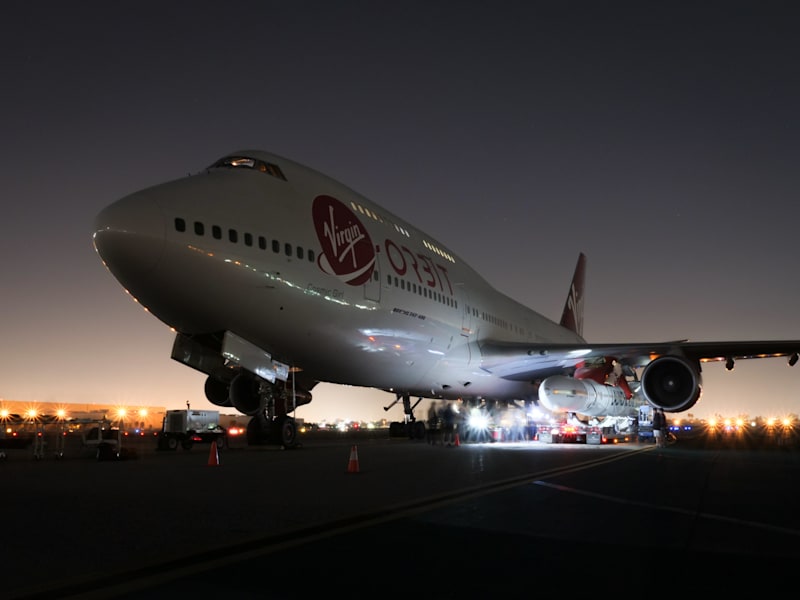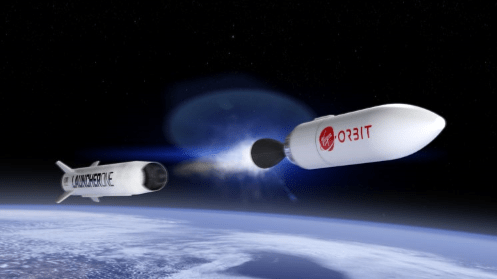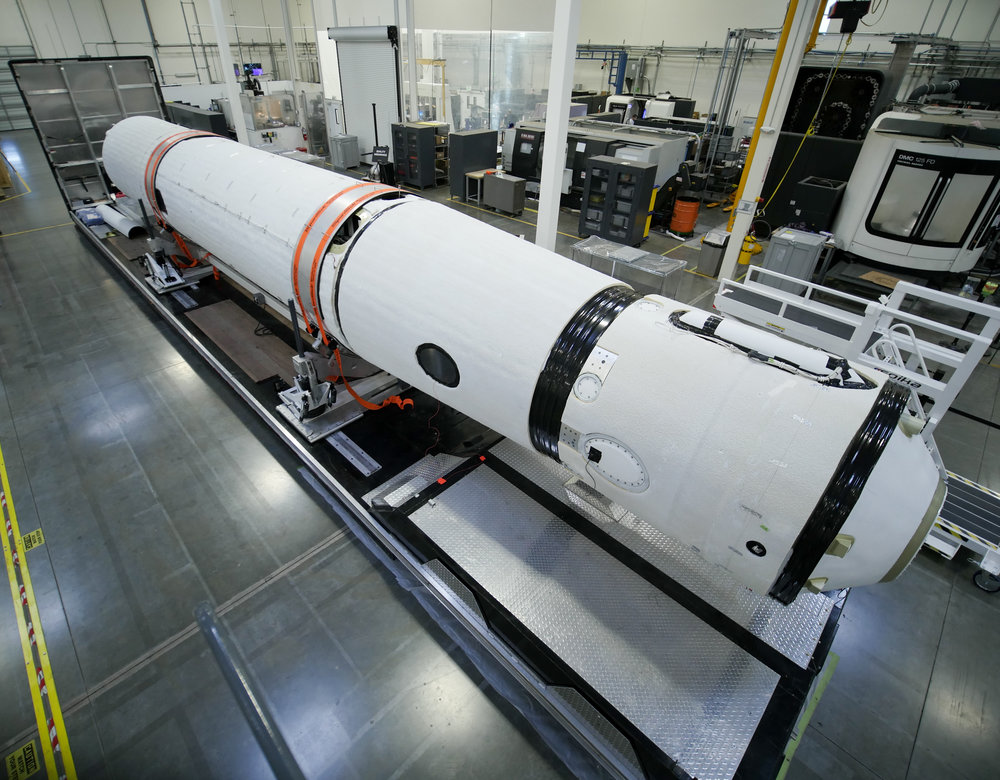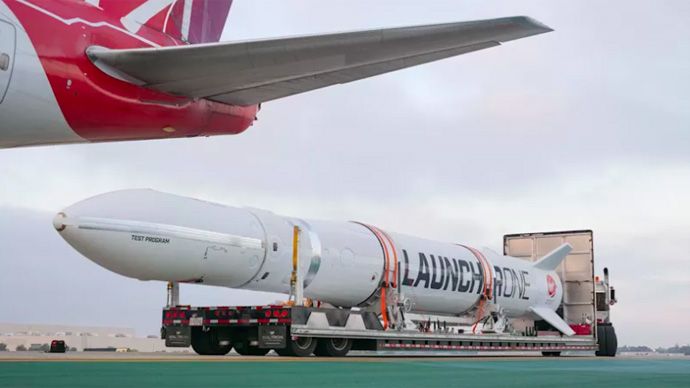The commercial space sector is about to get a little more crowded. SpaceX and Blue Origin have created headlines with their ongoing development of reusable launch vehicles. Now Virgin Orbit‘s “Launcher One” is carving out its own niche in the commercial space market, as an efficient, flexible launcher of small satellites.
Launcher One is Virgin Orbit’s system for launching small satellites into space. It can carry a payload of up to 1,100 pounds. It’s an expendable two-stage rocket launched from “Cosmic Girl”, a stripped-down, modified Boeing 747 from Virgin Air’s fleet. The system is designed to provide launch flexibility for Virgin Orbit’s customers.
On October 24th, the team at Virgin Orbit attached Launcher One to Cosmic Girl at Long Beach Airport, and the launch system came one step closer to its maiden flight sometime next year.

Launcher One is a two-stage LOX/RP-1 (Liquid Oxygen/Rocket Propellant-1) rocket, and this is how the system works:
- Cosmic Girl takes off from a conventional runway and carries the rocket up to an altitude of about 35,000 feet.
- Once it’s reached altitude, Cosmic Girl pitches up to about 25 degrees, and releases the rocket.
- The rocket fires its single main-stage engine, a 73,500 lb./f. rocket engine called Newton Three. Newton Three fires for about 3 minutes, then separates.
- The single upper-stage 5,000 lb./f. rocket engine called Newton Four fires multiple times—for up to 6 minutes total burn time—to place the satellite(s) in orbit.
- Both rocket stages are safely de-orbited, and Cosmic Girl returns to a pre-determined airport.

Virgin Orbit’s system is designed around flexibility. Conventional rockets must be launched from purpose-built launch pads like those at the Kennedy Space Center. Conventional rockets are massively powerful machines capable of carrying large payloads into space and require specialized facilities.
But the Launcher One system is designed to carry a small satellite, or several of them, into orbit. Cosmic Girl only needs a large enough runway to do its business. Cosmic Girl can avoid troubling weather or other things that sometimes delay conventional launches. This makes the entire system much more flexible.
The rocket is 70 ft. long, or about twice the length of a bus. It travels about 20 times faster than the speed of sound, or 17,500 mph. It weighs 57,000 pounds, or about the equivalent of 25 small family cars. It’s payload will be satellites as small as a loaf of bread to as large as a family refrigerator.

Cosmic Girl is the first 747 that has ever been converted to launch rockets. It can fly thousands of miles in any direction at 24 hours notice. This gives the whole system enormous flexibility to deliver payloads to the right orbit. According to Virgin Orbit, with a conventional ground launch customers must wait between 18 to 24 months.
Though Launcher One was mated to Cosmic Girl, it’s not yet ready for its maiden launch. According to Richard Branson, the team was carrying out integration checks “to verify mechanical, electrical, software, and dynamics all work together for the first time.”
The small satellite market is the fastest-growing segment in commercial space, and it shows no signs of slowing. Branson said that the mission of Virgin Orbit is to make “small satellites more frequent, sustainable, efficient and affordable…”
Sources:
- Richard Branson’s Blog Post: Virgin Orbit’s Launcher One Meets Cosmic Girl 747
- Virgin Orbit website

